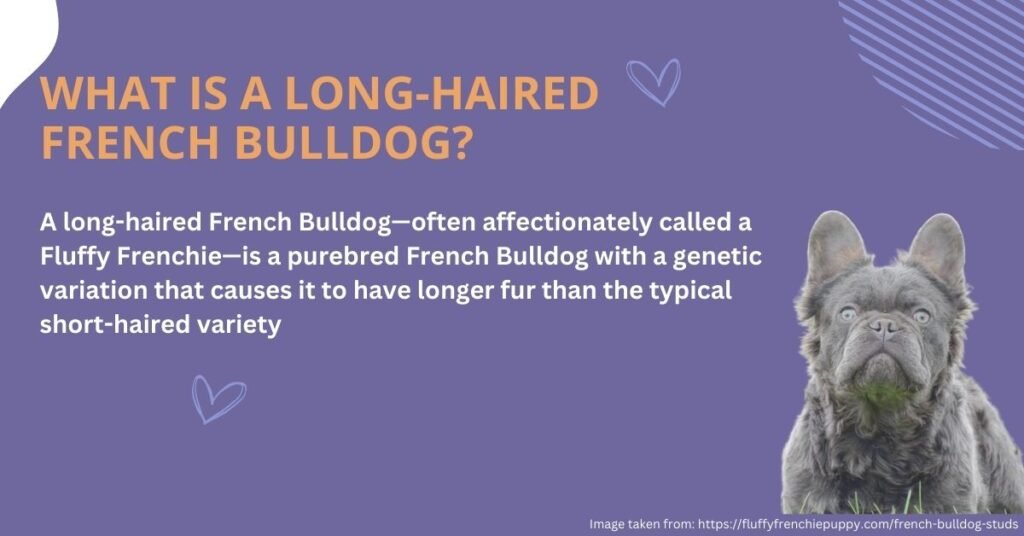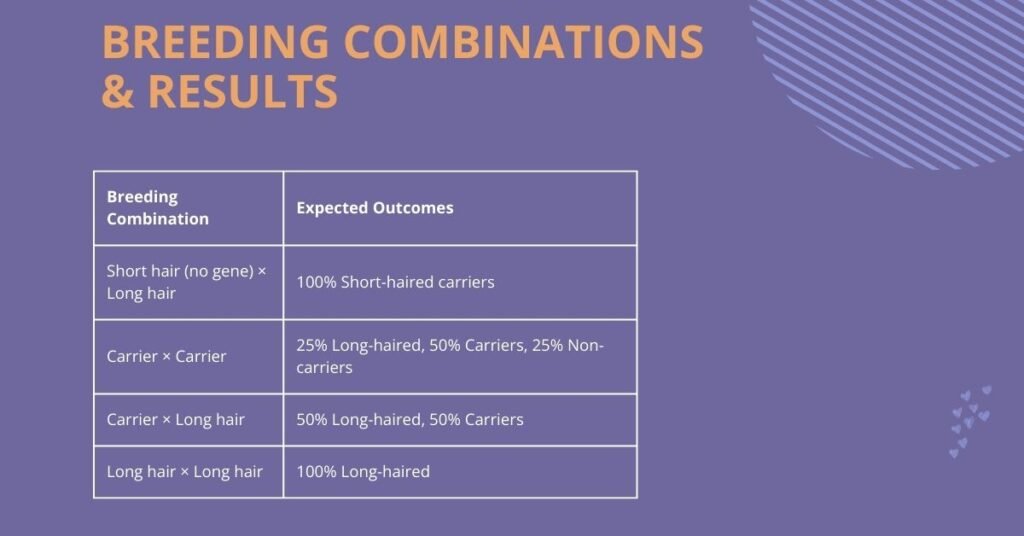French Bulldogs have captured the hearts of dog lovers worldwide, becoming one of the most popular breeds in recent years. With their distinctive bat ears, compact build, and charming personalities, these dogs have found their way into millions of homes. But have you ever encountered a Frenchie with longer, fluffier fur? You’re not seeing things—you’ve just met a long-haired French Bulldog.
These enchanting fluffy Frenchies aren’t a designer mix or a new hybrid—they’re 100% purebred French Bulldogs with a rare genetic variation that gives them their distinctive coat. The only difference between these adorable pups and standard Frenchies is the recessive gene that creates their longer fur, particularly noticeable around their ears and legs.
In this comprehensive guide, you’ll discover:
- The fascinating genetics behind the long-haired trait
- Physical characteristics and temperament of these special dogs
- Health considerations specific to fluffy Frenchies
- Grooming requirements for their luxurious coats
- How to find reputable breeders and what to expect price-wise
Whether you’re considering adding one of these rare beauties to your family or simply curious about this uncommon variation, this article will provide everything you need to know about long-haired French Bulldogs.
What Is a Long-Haired French Bulldog?

A long-haired French Bulldog—often affectionately called a Fluffy Frenchie—is a purebred French Bulldog with a genetic variation that causes it to have longer fur than the typical short-haired variety. These dogs maintain all the beloved characteristics of standard French Bulldogs, including their distinctive bat ears, compact muscular bodies, and charming personalities, with the added feature of a fluffier coat that makes them look even more adorable.
Definition and Origins
The long-haired Frenchie is not a separate breed or a mix—it’s simply a French Bulldog with a rare genetic trait. These dogs:
- Have fur that’s approximately 2-3 times longer than standard Frenchies
- Show the most noticeable fluff around their ears, neck, and legs
- Display the same range of colors and patterns as short-haired French Bulldogs
- Maintain the classic “bat ear” appearance, though often looking even more prominent framed by the longer hair
The history of French Bulldogs traces back to the 1800s in England, where they were developed as smaller versions of the English Bulldog. When lace workers from Nottingham relocated to France during the Industrial Revolution, they brought these small bulldogs with them. The French embraced these charming dogs, and over time, selective breeding emphasized their distinctive features, particularly their upright “bat ears.”
The origins of the long-haired trait within French Bulldogs remain somewhat mysterious. While some theorize it may have been introduced through crossbreeding with longer-haired breeds generations ago, modern genetic testing confirms these dogs are purebred French Bulldogs. The long-haired gene has likely been present in the breed’s genetic makeup for generations, occasionally appearing when breeding conditions were right.
The Science Behind the Fluff

What gives a Fluffy Frenchie its distinctive coat? The answer lies in genetics—specifically, a gene called Fibroblast Growth Factor 5 (FGF5). This gene regulates hair growth in many mammal species, including dogs.
The long-haired trait is caused by a recessive mutation in the FGF5 gene. Here’s how it works:
- Each dog inherits two copies of every gene—one from each parent
- For the long-haired trait to appear visibly, a French Bulldog must inherit two copies of the recessive FGF5 gene variant
- Dogs with only one copy (called “carriers”) have normal short hair but can pass the long-haired gene to their offspring
- When two carriers mate, approximately 25% of their puppies may be long-haired
This genetic understanding explains why Fluffy Frenchies can suddenly appear in litters from short-haired parents—both parents were carriers of the recessive gene. It also explains why these dogs are relatively rare; the right genetic combination must occur for the trait to express itself visibly.
For breeders specifically trying to produce long-haired puppies, the most reliable method is breeding two visually long-haired dogs together, which results in 100% long-haired offspring. However, ethical breeders always prioritize health and temperament over physical traits.
It’s important to understand that despite their different appearance, long-haired Frenchies are genetically identical to standard French Bulldogs in every way except for this single gene mutation. They are not:
- Mixed with other breeds
- A new or separate breed
- The result of breeding with Pekingese, Pomeranians, or other fluffy breeds
- Less “pure” than their short-haired counterparts
The American Kennel Club (AKC) recognizes long-haired French Bulldogs can be registered as purebred French Bulldogs, though the long-haired trait falls outside the standard for show purposes. This distinction has no bearing on their status as wonderful companion animals, and many Fluffy Frenchie owners consider their dog’s unique coat to be a special feature that makes their pet even more endearing.
Appearance and Physical Characteristics
Long-haired French Bulldogs share the same iconic structure and silhouette as their short-haired counterparts, with one striking difference—their gloriously fluffy coat. These adorable dogs maintain the distinctive features that make Frenchies so recognizable while adding an extra layer of charm with their longer fur.
Coat and Fur Characteristics

The coat of a Fluffy Frenchie is what truly sets them apart. Unlike the short, smooth coat of standard French Bulldogs, long-haired varieties display a medium-length fur that creates a soft, plush appearance. The texture is typically slightly softer than that of standard Frenchies, though it can vary from slightly wavy to straighter depending on the individual dog.
The fur isn’t uniformly long across the entire body—it shows distinctive growth patterns that emphasize certain features:
- Ears: Perhaps the most noticeable area, with longer fur creating a striking framing effect around their bat-shaped ears
- Neck and chest: Often forms a luxurious ruff or mane-like appearance
- Legs: Frequently displays longer “feathering” on the back of the legs
- Tail: Even their short tail appears fluffier with longer fur
- Face: While still relatively short-haired on the face, many have longer whiskers and slight feathering around the cheeks
Most hairy French Bulldogs have fur that ranges from 1-2 inches in length, though this can vary. Despite having longer fur, these dogs don’t typically have extremely long coats like some other breeds. Their coat is better described as medium-length, providing enough fluff to be distinctive without requiring extensive grooming.
When compared to standard French Bulldogs, the difference is immediately apparent. While standard Frenchies have sleek, close-lying coats that follow the contours of their muscular bodies, long-haired varieties have a softer silhouette with fur that obscures some of the sharper lines of their muscular frame.
Colors and Patterns

Long-haired Frenchies come in the same stunning array of colors and patterns as their short-haired cousins. The most common colors include:
| Color/Pattern | Description |
| Cream | Solid light cream to off-white coloration |
| Fawn | Light tan to deeper reddish-brown tones |
| Brindle | Tiger-striped pattern with dark stripes on a lighter background |
| Pied | Predominantly white with patches of another color |
| Blue | A diluted black appearing as a grayish-blue (considered rare) |
| Lilac | A diluted liver color with a distinctive purplish hue (very rare) |
Rarer and more exotic colors like blue, lilac, and merle tend to command higher prices, especially when combined with the long-haired trait. The merle pattern, characterized by a mottled pattern of darker blotches against a lighter background, creates a particularly striking appearance when featured on a long-haired coat.
One interesting aspect of fuzzy Frenchies is how their longer fur can sometimes subtly alter the appearance of their patterns. Brindle markings, for instance, might appear slightly softer or more blended in long-haired dogs compared to the more defined stripes visible on short-haired Frenchies. Similarly, the boundaries between color patches on pied dogs may appear more gradual rather than sharply defined.
Size and Physical Structure
In terms of size and structure, long-haired French Bulldogs match the standard for the breed. They typically:
- Stand between 11-13 inches tall at the shoulder
- Weigh between 16-28 pounds, with males usually being slightly larger than females
- Display the compact, muscular body typical of the breed
- Have the characteristic short muzzle and flat face (brachycephalic)
These dogs maintain the distinctive “bat ears” that are a hallmark of the breed, though they may appear even more pronounced when framed by longer fur. Their overall body structure remains identical to standard French Bulldogs—compact, muscular, and with a distinctive broad chest and narrower hindquarters.
Beyond their coat, fluffy French Bulldogs possess all the physical traits associated with the breed: round eyes with an alert expression, the characteristic flat face with its adorable wrinkles, and the compact, sturdy body that gives Frenchies their unique movement and posture. The longer coat simply adds an extra dimension of softness to their appearance without altering the fundamental structure that makes a French Bulldog immediately recognizable.
The Genetics of Long-Haired French Bulldogs
Understanding the genetics behind long-haired Frenchies helps explain why these adorable dogs are relatively rare and why they can sometimes appear unexpectedly in litters from short-haired parents. The science might seem complex at first, but the basic principles are actually quite straightforward.
How the Long Hair Gene Works

The key to the fluffy coat lies in a gene called Fibroblast Growth Factor 5 (FGF5). This gene regulates hair growth cycles in many mammals, including dogs. In the case of French Bulldogs, a specific mutation in this gene is responsible for the longer coat.
The long-haired trait is what geneticists call a recessive trait. This means:
- Each dog inherits two copies of the FGF5 gene—one from each parent
- The normal “short hair” version of the gene (often represented as “L”) is dominant
- The mutated “long hair” version (often represented as “l”) is recessive
- For a dog to have long hair, it must inherit two copies of the recessive gene (l/l)
When we talk about carriers, we’re referring to dogs that have one copy of each version (L/l). These dogs:
- Have short hair themselves (because the dominant gene is expressed)
- Carry the recessive long-hair gene that can be passed to offspring
- Show no visible signs of carrying the long-hair gene
- Can produce long-haired puppies when bred with another carrier or a long-haired dog
This genetic pattern explains why two short-haired French Bulldogs can sometimes produce long-haired puppies—both parents were carriers of the recessive gene and happened to both pass that recessive gene to their offspring.
The inheritance follows predictable statistical patterns. Consider these scenarios:
| Breeding Pair | Offspring Possibilities |
| Two carriers (L/l × L/l) | 25% normal (L/L), 50% carriers (L/l), 25% long-haired (l/l) |
| Carrier × Long-haired (L/l × l/l) | 50% carriers (L/l), 50% long-haired (l/l) |
| Long-haired × Long-haired (l/l × l/l) | 100% long-haired (l/l) |
While these percentages represent statistical probabilities, each puppy’s genetic makeup is determined randomly at conception, so actual litter compositions may vary.
Breeding Long-Haired Frenchies
Breeding specifically for fluffy French Bulldogs requires careful planning and genetic knowledge. Responsible breeders who want to produce long-haired puppies typically follow one of three approaches:
- Carrier to carrier breeding: When two carriers are bred together, approximately 25% of the puppies will be long-haired
- Carrier to long-haired breeding: This pairing increases the odds to approximately 50% long-haired puppies
- Long-haired to long-haired breeding: The surest approach, resulting in 100% long-haired puppies
However, ethical breeding extends far beyond simply producing puppies with desirable physical traits. Responsible Frenchie breeders must balance multiple considerations:
- Genetic diversity: Over-focusing on a single trait can reduce genetic diversity and potentially introduce health issues
- Health testing: Testing for known French Bulldog health conditions is crucial regardless of coat type
- Temperament: Behavioral characteristics should never be sacrificed for physical attributes
- Breed standard: Understanding that while long-haired Frenchies are purebred, they don’t conform to show standards
Many breeders now use DNA testing to identify carriers of the long-hair gene. This technology has revolutionized breeding programs by allowing breeders to:
- Identify carriers that show no visible signs of the trait
- Make more informed breeding decisions
- Predict with greater accuracy the coat types of resulting puppies
- Maintain genetic diversity while still occasionally producing long-haired puppies
It’s worth noting that the increasing popularity of long-haired Frenchies has unfortunately led some unethical breeders to focus exclusively on producing these rare dogs, sometimes at the expense of health and temperament. A truly responsible breeder prioritizes overall health, genetic diversity, and temperament above all else, viewing the long-haired trait as a fascinating genetic variation rather than the primary breeding goal.
For those specifically seeking a fluffy Frenchie, working with a breeder who conducts comprehensive health testing and approaches breeding ethically is essential. A reputable breeder will be transparent about their breeding practices, health testing protocols, and will prioritize producing healthy, well-adjusted puppies regardless of their coat type.
Breeding Combinations and Results

Different breeding combinations produce predictable statistical outcomes when it comes to long-haired Frenchies. Understanding these probabilities helps breeders make informed decisions:
| Breeding Combination | Expected Outcomes |
| Short hair (no gene) × Long hair | 100% Short-haired carriers |
| Carrier × Carrier | 25% Long-haired, 50% Carriers, 25% Non-carriers |
| Carrier × Long hair | 50% Long-haired, 50% Carriers |
| Long hair × Long hair | 100% Long-haired |
A Punnett square visually demonstrates these inheritance patterns. For example, when breeding two carriers (L/l):

This visual representation shows the 25% chance (l/l) of producing a long-haired puppy from two carrier parents.
Ethical Breeding Considerations
Responsible breeding of fluffy Frenchies must prioritize health over appearance. Ethical breeders:
- Conduct comprehensive health testing for common Frenchie issues including:
- Hip and elbow evaluations
- Cardiac screenings
- Respiratory function assessments
- DNA tests for genetic conditions
- Focus on temperament and structural soundness before coat type
- Maintain genetic diversity rather than repeatedly breeding related dogs carrying the long-hair gene
- Avoid breeding exclusively for rare traits that might compromise health
- Educate buyers about the breed’s health challenges, regardless of coat type
While the long-haired trait is certainly charming, ethical breeders view it as a bonus rather than the primary breeding goal. The health and wellbeing of these dogs must always take precedence over aesthetic considerations.
Temperament and Personality

When it comes to personality, long-haired French Bulldogs are exactly what you’d expect from any Frenchie—charming, affectionate companions with a touch of stubborn independence. Their temperament is identical to their short-haired counterparts, as the gene affecting coat length has absolutely no impact on behavior or personality traits.
These fluffy Frenchies are renowned for their loving, people-oriented nature. They truly thrive on human interaction and form strong bonds with their families. Key personality traits include:
- Affectionate: They’re notorious cuddle bugs who love nothing more than being close to their humans
- Playful: Despite their stocky build, they maintain a playful, sometimes clownish demeanor well into adulthood
- Adaptable: They adjust well to various living situations, from apartments to larger homes
- Intelligent: They’re clever dogs with a touch of independence that can sometimes present as stubbornness
Their social nature makes them excellent companions for various household configurations. Long-haired Frenchies typically:
| Social Context | Compatibility |
| Families | Excellent—they’re devoted family dogs who bond with all members |
| Children | Generally very good, though supervision is always recommended with young children and any dog |
| Other dogs | Usually social and friendly, especially with proper socialization from puppyhood |
| Cats | Often can coexist peacefully when introduced properly and gradually |
| Strangers | Typically friendly but may be slightly reserved initially |
One important consideration is their need for companionship. These dogs form strong attachments to their humans and can experience separation anxiety if left alone for extended periods. They’re best suited to households where someone is home frequently or where arrangements can be made to prevent long periods of solitude.
Despite their sometimes stubborn streak, hairy Frenchies are generally eager to please and respond well to positive reinforcement training methods. Their intelligence combined with their desire for human approval makes them reasonably trainable, though they may occasionally test boundaries with their charming yet stubborn nature.
Health Considerations
When considering adding a long-haired French Bulldog to your family, understanding their potential health challenges is crucial. These adorable dogs share the same health profile as standard French Bulldogs, as their fluffy coat has no impact on their overall health predispositions.
Common Health Issues

The most significant health concerns for fluffy Frenchies stem from their brachycephalic (flat-faced) structure. These include:
- Brachycephalic Obstructive Airway Syndrome (BOAS): Their shortened airways can make breathing difficult, especially during exercise or in hot weather
- Heat sensitivity: Their compromised respiratory system makes them vulnerable to overheating
- Skin fold dermatitis: The wrinkles that give Frenchies their distinctive look can harbor bacteria and cause infections
- Spinal issues: Their unique body structure predisposes them to intervertebral disc disease and other spinal problems
- Eye conditions: Prominent eyes are susceptible to injury and conditions like cherry eye or corneal ulcers
Other health concerns that affect the breed include:
| Condition | Description |
| Hip dysplasia | Abnormal formation of the hip joint that can lead to arthritis and mobility issues |
| Allergies | Skin allergies and food sensitivities are relatively common |
| Patellar luxation | Dislocation of the kneecap that can cause lameness |
| Heart conditions | Including patent ductus arteriosus and ventricular septal defects |
Lifespan and Wellness
A well-bred long-haired Frenchie typically enjoys a lifespan of 10-12 years. To maximize their health and longevity:
- Maintain a healthy weight: Obesity exacerbates breathing difficulties and joint problems
- Schedule regular veterinary checkups: Early detection of health issues improves outcomes
- Manage exercise carefully: Provide regular but moderate activity, avoiding exertion in hot weather
- Monitor breathing: Be alert to signs of respiratory distress, especially during exercise or excitement
- Clean skin folds regularly: Prevent infections by keeping wrinkles dry and clean
When searching for a long-haired French Bulldog puppy, prioritize breeders who conduct comprehensive health testing. Responsible breeders screen for genetic conditions and focus on improving health rather than just producing rare coat types.
Remember that while these health concerns exist, many Frenchies live happy, healthy lives with proper care and preventative health measures. Working with a knowledgeable veterinarian familiar with brachycephalic breeds is an important part of keeping your fluffy companion in optimal health.
Caring for a Long-Haired French Bulldog
Proper care for your fluffy Frenchie ensures they remain healthy, comfortable, and looking their best. While long-haired French Bulldogs share many care requirements with their short-haired counterparts, their distinctive coat does require some additional attention.
Grooming Requirements
The medium-length coat of a long-haired Frenchie necessitates more frequent grooming than standard French Bulldogs. However, their grooming needs are still moderate compared to truly long-haired breeds.
Brushing routine:
- Frequency: Brush your fluffy friend 2-3 times per week to prevent matting and reduce shedding
- Tools: A slicker brush works well for most of the coat, while a fine-toothed comb helps with areas prone to tangles (behind ears, under legs)
- Technique: Use gentle strokes and pay special attention to areas where the fur is longest and most prone to tangling
Shedding patterns for long-haired French Bulldogs follow seasonal cycles, with heavier shedding typically occurring during spring and fall. While they do shed, many owners report that the shedding is more manageable than with short-haired Frenchies because:
- The longer fur tends to catch and hold loose hair rather than immediately releasing it onto furniture
- Regular brushing removes much of the loose fur before it can be shed around your home
Bathing needs are similar to standard Frenchies:
- Bathe your hairy Frenchie every 4-6 weeks using a gentle dog shampoo
- More frequent bathing can strip natural oils and lead to dry skin
- Always completely dry your Frenchie after bathing, paying special attention to skin folds
- Consider using a dog-specific conditioner to keep the longer coat soft and manageable
Special coat considerations:

| Area | Care Needed |
| Ears | Check and clean regularly as the longer fur can trap moisture and debris |
| Face folds | Wipe daily with a slightly damp cloth and thoroughly dry to prevent infections |
| Paw pads | Trim fur between pads to prevent matting and improve traction |
| Sanitary areas | Keep trimmed for hygiene purposes |
Exercise and Activity Needs
Long-haired French Bulldogs require moderate exercise tailored to their brachycephalic (flat-faced) structure. Their exercise needs are identical to standard Frenchies, as the coat length doesn’t affect their physical capabilities or limitations.
Appropriate activity levels:
- 20-30 minutes of exercise daily, ideally split into two shorter sessions
- Focus on low-impact activities that don’t stress their breathing
- Avoid forced exercise or activities that require extended exertion
Temperature sensitivity is a critical consideration:
- Heat: Extremely temperature-sensitive due to their compromised breathing apparatus
- Cold: The longer coat provides slightly better cold protection than short-haired Frenchies, but they still need protection in cold weather
- Ideal conditions: Moderate temperatures between 60-75°F (15-24°C) are most comfortable
Recommended activities for your fluffy companion:
- Short, leisurely walks during cooler parts of the day
- Indoor play sessions with puzzle toys that engage their mind without taxing their breathing
- Gentle games of fetch with frequent breaks
- Socialization opportunities with other calm, friendly dogs
Warning signs to watch for during activities include:
- Excessive panting or difficulty breathing
- Blue or purple tongue
- Weakness or collapse
- Excessive drooling
If you notice any of these signs, immediately move your dog to a cool, quiet area, offer small amounts of water, and contact your veterinarian if symptoms don’t quickly improve.
With appropriate grooming and carefully managed exercise, your long-haired French Bulldog will thrive as a happy, healthy companion. The extra time spent caring for their distinctive coat creates another opportunity to bond with these affectionate, charming dogs who so clearly enjoy human companionship.
Finding a Long-Haired French Bulldog
If you’ve fallen in love with the idea of adding a fluffy Frenchie to your family, you’ll need patience, research skills, and a healthy budget. These enchanting dogs aren’t as readily available as their short-haired cousins, making the search process more involved but ultimately rewarding.
Rarity and Availability
Long-haired French Bulldogs are genuinely rare for several genetic reasons:
- The long-hair gene is recessive, meaning a puppy must inherit two copies (one from each parent) to display the trait
- Without genetic testing, carriers of the long-hair gene look identical to non-carriers
- Traditional breeding programs often unintentionally selected against the trait when following breed standards
This rarity creates several challenges for prospective owners:
- Limited breeding programs specifically focusing on long-haired Frenchies
- Geographic limitations, with specialized breeders concentrated in certain regions
- Waiting lists that can extend for months or even years
- Verification challenges in distinguishing genuine long-haired French Bulldogs from mixed breeds
The search process requires significant patience. Many serious buyers find themselves:
- Researching breeders for 6-12 months before finding a suitable match
- Joining waiting lists for future litters
- Being willing to travel considerable distances for the right puppy
- Building relationships with breeders long before a puppy is available
Price Expectations
The combination of rarity and high demand means that long-haired French Bulldogs command premium prices compared to their short-haired counterparts. Current price ranges typically fall between:
| Quality/Rarity Level | Approximate Price Range |
| Pet quality | $5,000-$10,000 |
| Show potential | $10,000-$15,000 |
| Rare colors/top lineage | $15,000-$30,000+ |
Several factors significantly influence these prices:
- Coat color: Rare colors like blue, lilac, or merle typically cost substantially more
- Lineage: Puppies from champion bloodlines command higher prices
- Gender: Females often cost more due to their breeding potential
- Structure: Puppies with excellent conformation closer to breed standards (apart from coat)
- Location: Prices vary by region and country, with some areas commanding higher premiums
The substantial price difference between standard and long-haired Frenchies stems from:
- Basic supply and demand economics—fewer available puppies meeting higher demand
- Increased breeding complexity and specialized knowledge required
- Smaller litter sizes typical in French Bulldogs (averaging 2-4 puppies)
- Additional genetic testing costs for responsible breeders
Identifying Reputable Breeders
With such a significant investment, working with a reputable breeder becomes even more critical. Watch for these red flags that might indicate an unethical operation:
- Significantly lower prices than market average
- Unwillingness to provide health testing results
- Reluctance to allow visits to their facility
- Pressure to make quick decisions or deposits
- Limited knowledge about the breed or genetics
- Breeding extremely young dogs or breeding females in consecutive heat cycles
- Offering multiple rare breeds or “designer mixes”
When evaluating potential breeders, ask these essential questions:
- “What health testing do you perform on your breeding dogs?”
- Look for: Hip evaluations, patella exams, cardiac screening, DNA tests for breed-specific conditions
- “How do you confirm the long-hair gene in your breeding program?”
- Look for: References to DNA testing, understanding of inheritance patterns
- “How many litters does each female produce, and how often?”
- Look for: No more than 4-5 total litters, with adequate recovery time between
- “What kind of health guarantee do you offer?”
- Look for: Written guarantees against congenital defects, reasonable terms
- “Can I meet the parents or see where the puppies are raised?”
- Look for: Transparency, clean conditions, well-socialized dogs
The importance of health testing cannot be overstated. Responsible breeders will readily provide evidence of:
- OFA or PennHIP evaluations for hip dysplasia
- Patella (knee) certifications
- Cardiac exams by board-certified cardiologists
- CERF eye examinations
- DNA tests for breed-specific conditions like DM (degenerative myelopathy)
While finding a long-haired Frenchie requires more effort, time, and financial investment than acquiring a standard French Bulldog, the joy of bringing home one of these special dogs makes the process worthwhile for dedicated enthusiasts.

